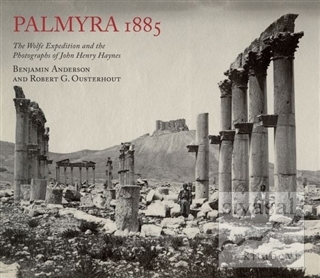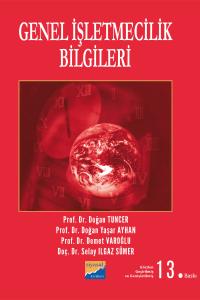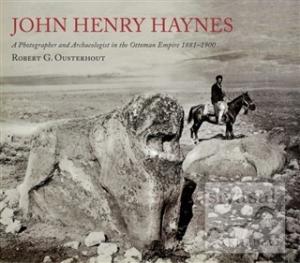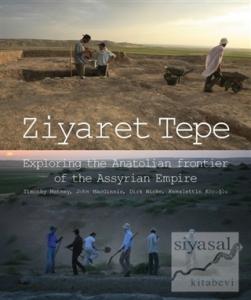
Published in October 2016, this is a sequel to Robert G. Ousterhout's landmark study on the photographer John Henry Haynes in 2011, which has also now been reprinted in a new edition with additional unpublished photographs. Lavishly illustrated with 85 colour plates, including some 80 images that have never before been published, this extraordinary portrait of Palmyra is co-authored by Robert Ousterhout and Benjamin Anderson.
Home to the legendary Queen Zenobia, the Syrian oasis of Palmyra – known as ‘the Pearl of the Desert' – was one of the most important cultural centres of the ancient world. A key stop on the Silk Road, it was a vital link between the East and the West, and a prize fought over by successive conquering armies.
European adventurers began exploring Palmyra's priceless Roman ruins in the 17th century, but it wasn't until the advent of photography in the 19th century that the public became aware of its scale and majesty. In 1885, the sight of Palmyra astounded members of the Wolfe Expedition as they journeyed home from Mesopotamia. The group's photographer, John Henry Haynes, documented the monumental temples, tombs and colonnades in more than a hundred invaluable images.
Since then, Haynes and his work have largely been forgotten, and the forces of the self-styled Islamic State have destroyed the key monuments of this world-renowned site, including the glorious Temple of Bel. Haynes's images of Palmyra – published here for the first time – are all the more poignant.
Palmyra 1885, by Benjamin Anderson and Robert G. Ousterhout, is the first published record of the five fruitful days that Haynes spent in Syria's ancient desert city.
Published in October 2016, this is a sequel to Robert G. Ousterhout's landmark study on the photographer John Henry Haynes in 2011, which has also now been reprinted in a new edition with additional unpublished photographs. Lavishly illustrated with 85 colour plates, including some 80 images that have never before been published, this extraordinary portrait of Palmyra is co-authored by Robert Ousterhout and Benjamin Anderson.
Home to the legendary Queen Zenobia, the Syrian oasis of Palmyra – known as ‘the Pearl of the Desert' – was one of the most important cultural centres of the ancient world. A key stop on the Silk Road, it was a vital link between the East and the West, and a prize fought over by successive conquering armies.
European adventurers began exploring Palmyra's priceless Roman ruins in the 17th century, but it wasn't until the advent of photography in the 19th century that the public became aware of its scale and majesty. In 1885, the sight of Palmyra astounded members of the Wolfe Expedition as they journeyed home from Mesopotamia. The group's photographer, John Henry Haynes, documented the monumental temples, tombs and colonnades in more than a hundred invaluable images.
Since then, Haynes and his work have largely been forgotten, and the forces of the self-styled Islamic State have destroyed the key monuments of this world-renowned site, including the glorious Temple of Bel. Haynes's images of Palmyra – published here for the first time – are all the more poignant.
Palmyra 1885, by Benjamin Anderson and Robert G. Ousterhout, is the first published record of the five fruitful days that Haynes spent in Syria's ancient desert city.















